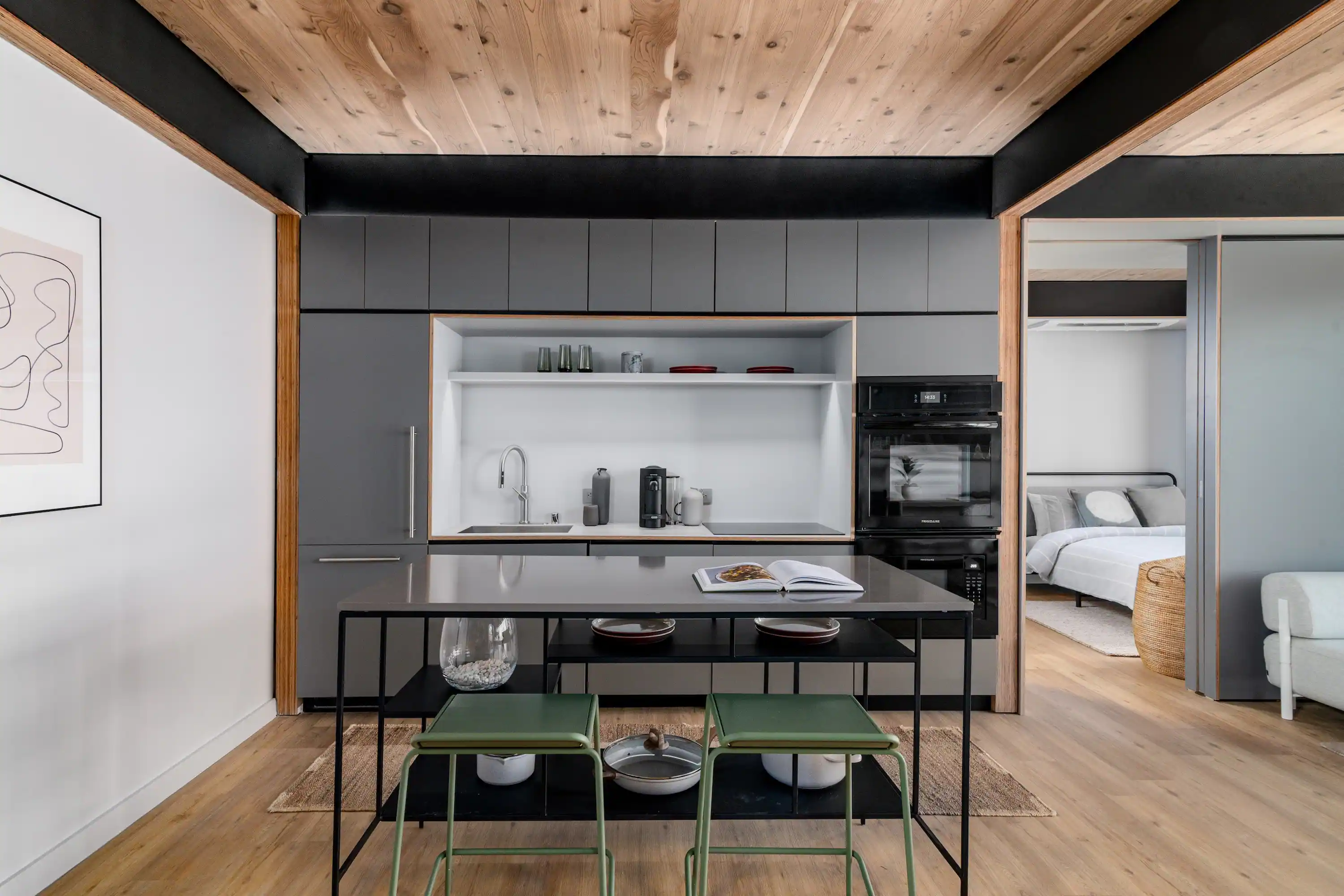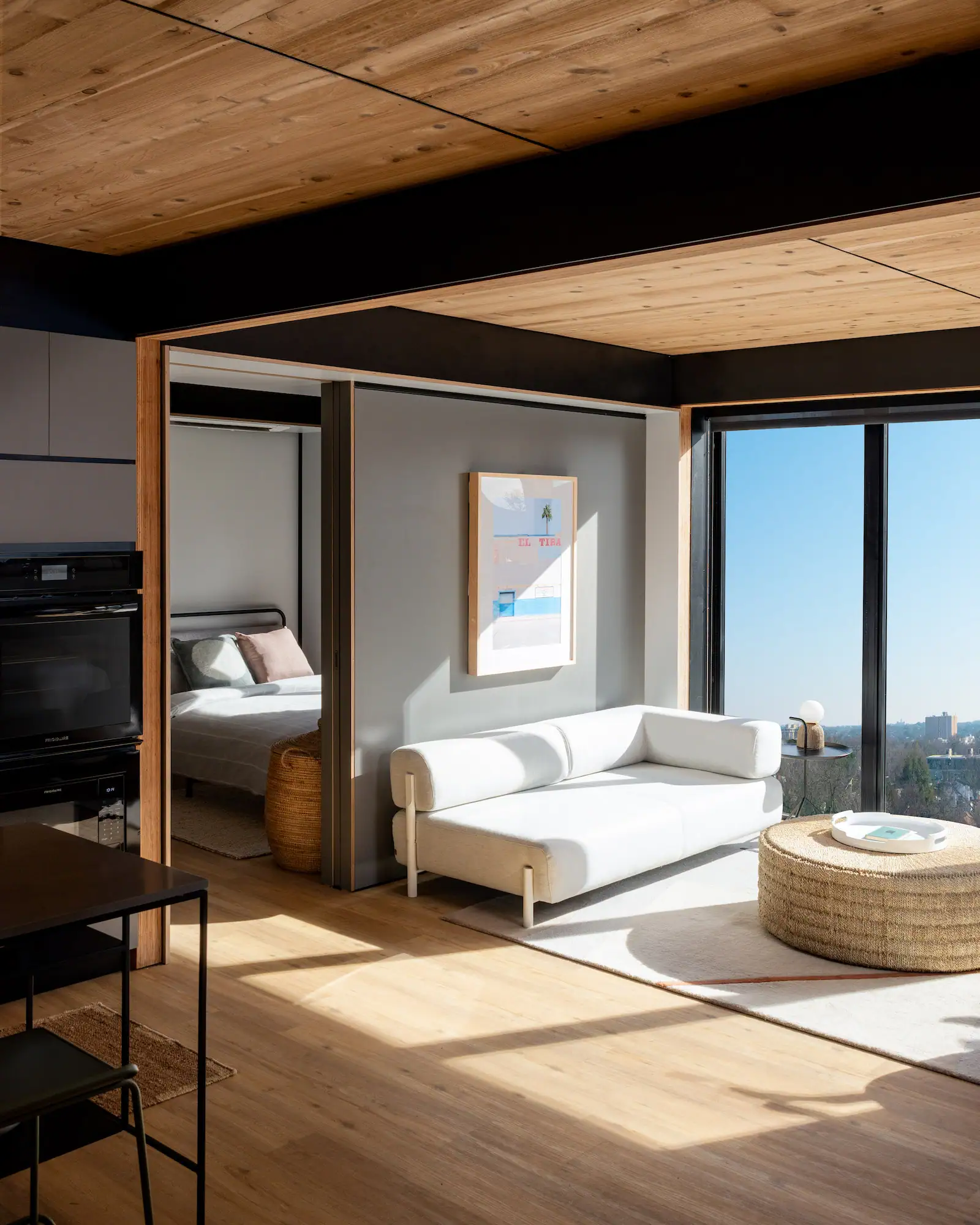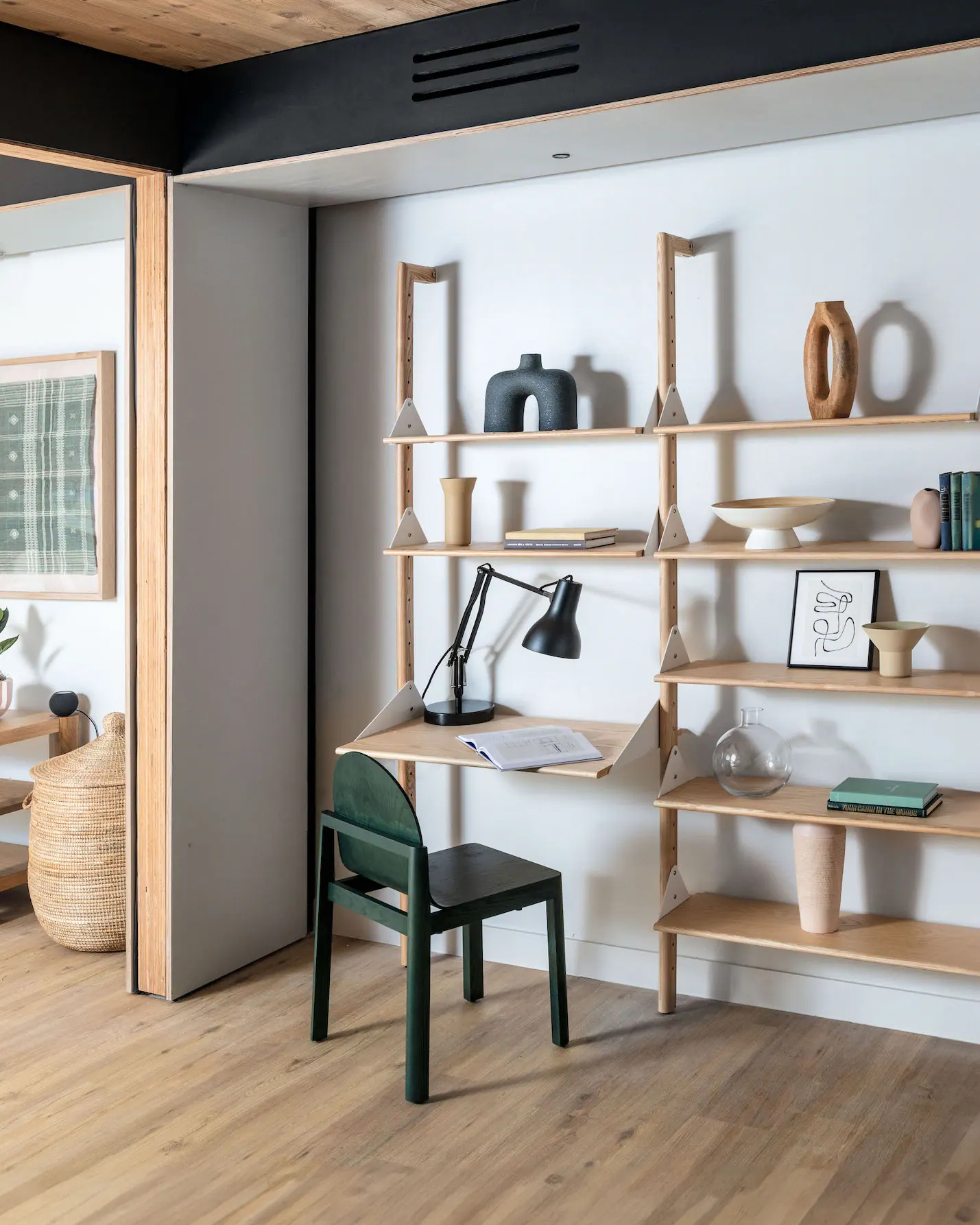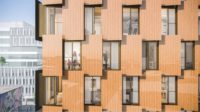Earlier this year, Juno, a Silicon Valley-based “proptech” startup with a novel approach to the multifamily sector, completed its first project—a 24-unit apartment building in Austin, Texas. The building, known as Juno East Austin, comprises four levels of mass-timber construction over a steel-framed podium. Designed with Ennead, the new Juno structure relies on a kit of parts of about 30 custom-fabricated components, including mass-plywood-panel (MPP) floor slabs and columns, laminated-veneer-lumber beams, bathroom pods, and a unitized facade. The aim is to “productize” housing, making its construction similar to the manufacturing process for consumer electronics, according to BJ Siegel, Juno’s co-founder and a former Apple executive.

The Juno system consists of about 30 pre-fabricated elements. Image courtesy Juno
Behind its weathering-steel skin and above a ground floor housing the lobby and retail space, the building has has 24 studio and one-bedroom apartments, including 20 market-rate units with rents starting at $2,000 per month, and four units designated as affordable. The apartments have a level of detail and finish that is unusual for rental housing, with features that include timber ceilings, wood floors, generously sized windows, and all-electric appliances. Instead of drywall, interior partitions are made of high-pressure laminate over a plywood core, with the edges of this substrate left exposed. “There is a degree of care and sophistication that cookie-cutter apartment buildings just don’t have,” says Tomas Rossant, an Ennead partner. To date, 50 percent of the apartments have been rented.

The podium level, which is steel-framed, houses a lobby and commercial space. Photo © Tobin Davies
The startup, in which Ennead has a small equity stake, had planned similar buildings in Denver and Seattle, but those projects are on indefinite hold, primarily due to high interest rates. Should they move forward, only their ground floors would require conventional construction documents, says Rossant, explaining that Ennead capitalized on the full capabilities of building information modeling (BIM), pushing the technology “to the red line,” using it for the development of the assembly, for designing and quantifying the components, and coordinating with fabrication and manufacturing partners. For subsequent projects, the developer would need to hire a local architect to navigate codes and zoning and to design a site-specific base. However, for the remaining part of the building, documentation would be essentially “automated” from the podium up, he says. The local firm would “run the playbook” developed by Juno and Ennead.
The kit of parts coupled with BIM allows for modifications to accommodate market conditions or material availability, according to the Juno team. For instance, cross-laminated timber panels (CLT) could be substituted for the MPP floor slabs since there are a growing number of CLT suppliers, suggests Rossant.

1

2

3
Juno's apartments have all-electric kitchens (1), floor-to-ceiling windows (2), and partitions made of laminate over a plywood core. Photos © Tobin Davies

A typical Juno floor plan. Image courtesy Juno, click to enlarge.
In Austin, erection of the timber superstructure required 28 days—about 60 percent faster than that of a typical stick-built building of similar size. Despite the time savings, the project’s opening was delayed. Originally set for completion by the end of 2022, according to a RECORD story on the project’s progress published in July of that year, the building did not open until this past February. The main culprit was not the innovative construction system, but the local utility’s difficulty in securing the building’s transformer, according to Siegel.
Despite the hurdles, the Juno team sees applications for the concept in other sectors. Siegel points to hospitality and retail and Rossant to dormitories. Multifamily projects could also materialize if interest rates fall. If that comes to pass, more apartment dwellers would be able to experience high design, says Rossant. “Now most people don’t get architecture,” he says. “They get buildings.”

Photo © Tobin Davies





